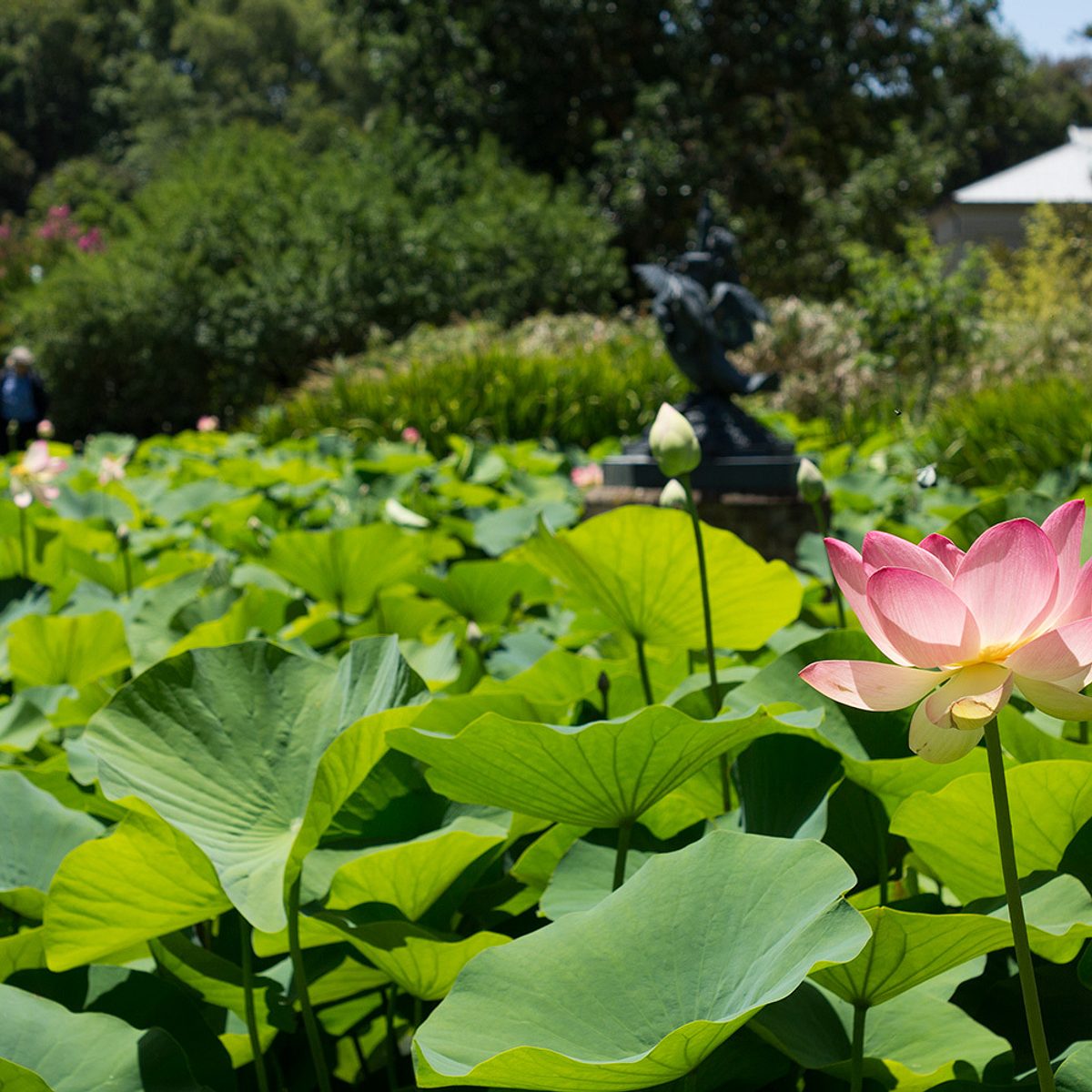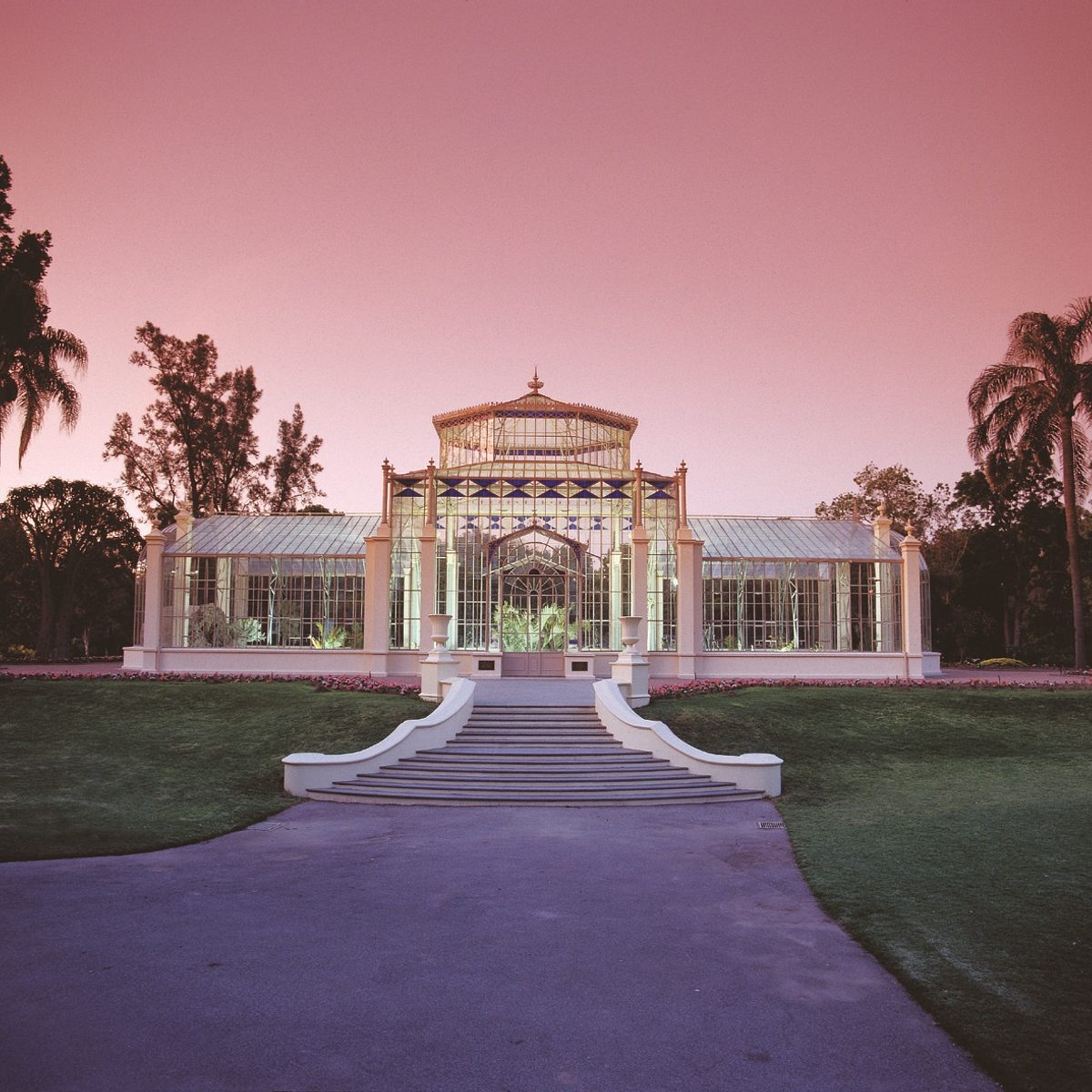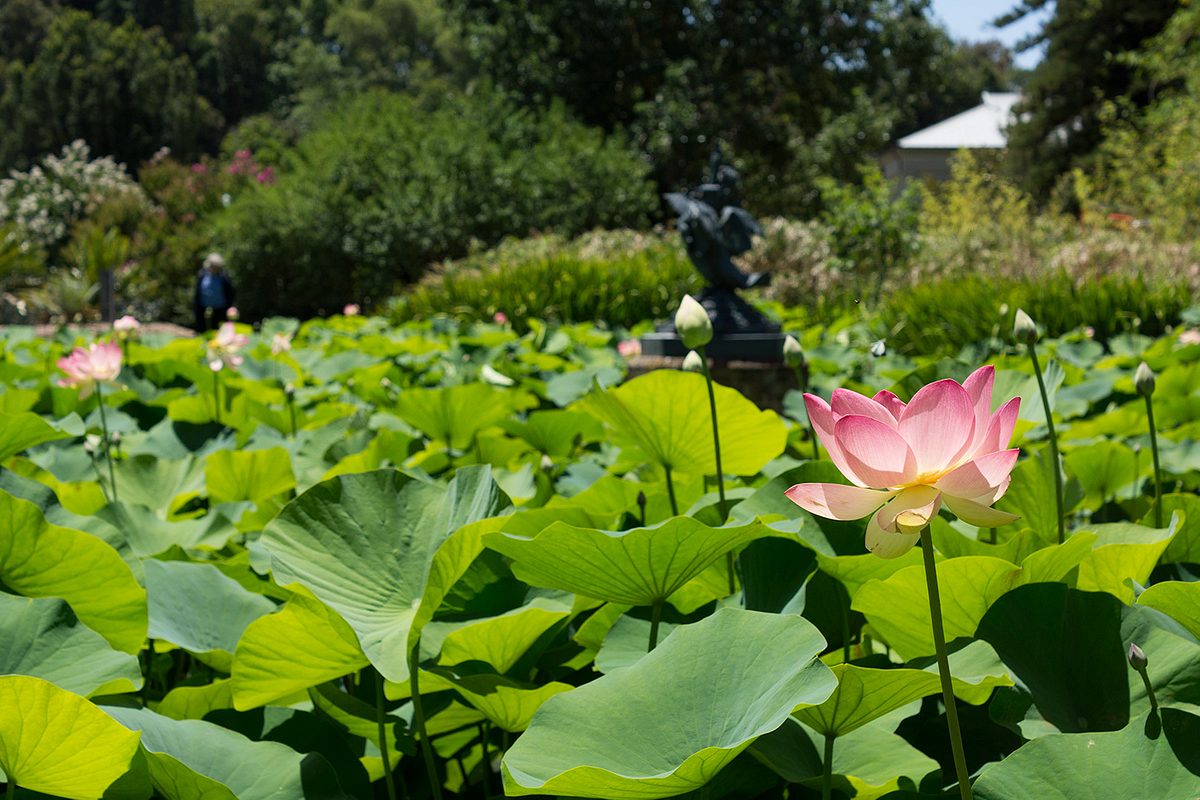


The Amazon Waterlily Pavilion is an exquisite glass palace for a jewel of the natural world – the Victoria amazonica waterlily, which, in the wild, is found in the backwaters of South America’s Amazon River.
The pavilion was built in 2007 to replace the Amazon Waterlily's original purpose-built residence, the Victoria House. The design of the energy-efficient glasshouse was inspired by the lily's giant leaves, and the original pond from the Victoria House remains as the centrepiece of the new pavilion.
An interpretive gallery inside the pavilion explores the unique form of the waterlily, interprets its remarkable biology and sex life, and explores its cultural and symbolic significance. The landscape surrounding the pavilion includes bromeliads, orchids and begonias.
On 1 January 2008, the waterlily blossomed for the first time in its new home. It produced a spectacular flower measuring 30cm in diameter and 12cm in height. The largest lily pad was 165cm in diameter.
The best time to see the Victoria amazonica waterlily’s spectacular flower is between September and April, but even then you have to be quick – they only last 48 hours or so.
The flower opens with dazzling white on the first evening, with beetles drawn in by the flower’s sweet scent. The flower then shuts, trapping the beetles inside the flower, where the beetles’ transfer of pollen helps fertilisation take place. The flower reopens the following evening – this time pretty in pink/purple – with the beetles moving on to repeat the process, and the flower closing up and sinking back underwater.
The Victoria amazonica’s flowers can grow up to 40cm, and its lily pads up to two metres in diameter. Leaf size is influenced by the depth of water as this determines the length of the leaf stalks.
Daily 10am - until one hour before the Garden closes.
There were a number of donors who contributed to the project and we thank them for their generous support: